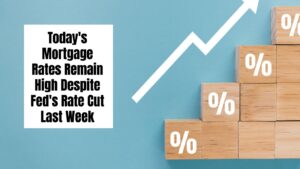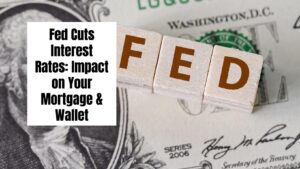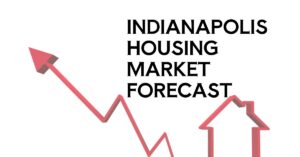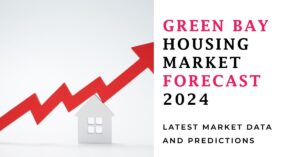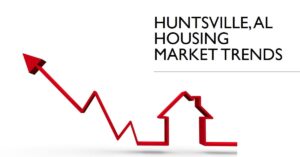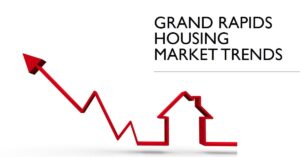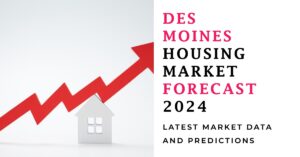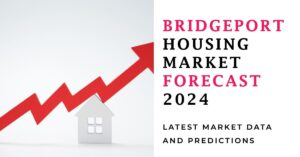In a surprising twist, today's mortgage rates remain high even after the recent Fed rate cut on November 7, 2024. Despite the Federal Reserve's efforts to lower interest rates, the average 30-year fixed mortgage rate holds steady at 6.91%, and the 15-year fixed mortgage rate has seen a slight increase, now sitting at 6.19%. This situation leaves many homebuyers puzzled as they were anticipating relief from the soaring mortgage costs that have characterized the housing market.
Today's Mortgage Rates Remain High Despite Fed's Rate Cut
Key Takeaways
- Mortgage Rates: The average 30-year mortgage rate is 6.91%, unchanged from last week.
- 15-Year Fixed Rate: Currently at 6.19%, up slightly by 0.01%.
- Fed's Rate Cut: The Federal Reserve cut rates by 0.25% on November 7, aiming to stimulate economic growth.
- Economic Indicators: Strong economic data and political uncertainty have contributed to persistently high mortgage rates.
- Future Outlook: Analysts expect mortgage rates to gradually decrease but predict a slow and complicated path ahead due to various external factors.
The Current State of Mortgage Rates
As of November 11, 2024, the average 30-year fixed mortgage interest rate stands at 6.91%. This figure marks a lack of change from the previous week, indicating a momentary stabilization after the highs witnessed earlier in the year. Conversely, the 15-year fixed mortgage has seen a minor uptick, now averaging 6.19%. Prospective homebuyers may find these figures disheartening as various indicators suggested rates would dip following the Federal Reserve's recent reductions.
The circumstances around today’s high mortgage rates create confusion. Traditionally, when the Fed cuts its benchmark rate, you can expect mortgage rates to follow suit. However, mortgage rates are influenced by a multitude of factors beyond the Fed's direct control. These include investor expectations, economic indicators, and even geopolitical events.
Recommended Read:
What Caused Today’s High Mortgage Rates?
During the past two years, the Federal Reserve embarked on a rigid campaign of rate hikes to combat soaring inflation. This initiative pushed mortgage rates to record highs, frustrating many prospective buyers. Recently, however, analysts had speculated that when interest rates began to fall, mortgage rates would respond favorably. Yet the opposite has unfolded.
After the 0.5% cut in interest rates announced in September and the 0.25% cut in November, many expected a drop in mortgage rates. Instead, the rates have remained elevated.
Several factors contribute to this seemingly contradictory situation:
- Economic Strength: The economic landscape is showing stronger-than-anticipated indicators, which often leads to higher rates. Elements like improved labor statistics and consumer confidence tend to push rates upward even when the Fed signals lower overall rates.
- Political Uncertainty: As the elections unfold, geopolitical instability and speculation about future policies contribute to market volatility. Concerns regarding economic policies following the elections have raised investor apprehensions about potential increases in government spending and inflation.
- Investor Sentiment: Mortgage rates often move based on investor expectations. Following favorable economic data, investors adjust their outlook, which can indirectly lead to higher mortgage rates, as they anticipate long-term economic growth.
- Market Volatility: The bond market plays a significant role in determining mortgage rates. Recently observed volatility within the market has caused mortgage rates to spike due to changing yields on government bonds.
Going Forward: Will Mortgage Rates Decrease?
Looking ahead, many housing market experts maintain cautious optimism regarding the future of mortgage rates moving into 2025. Most forecasts suggest that, barring unexpected changes in economic conditions, the average 30-year mortgage rate could potentially descend towards 6% by the end of the year. However, achieving this target hinges on several conditions:
- Weakening Economic Data: A consistent decline in labor numbers and other economic indicators might prompt more aggressive action from the Fed, which could help drive mortgage rates lower.
- Anticipated Fed Rate Cuts: Analysts hope for another rate cut in December, as this could stimulate further reductions in mortgage rates.
- Continued Uncertainty: Nonetheless, the outcome remains uncertain. If the economy continues to demonstrate resilience, it may lead to a pause in rate cuts, keeping mortgage rates elevated.
Comparing Rates from Different Lenders
For homebuyers navigating this challenging environment, exploring lending offers remains crucial. Comparing mortgage rates from various institutions can open opportunities for securing more favorable financing options. Gathering current data from reliable financial sources allows borrowers to gauge the best available rates at any given time.
Despite the high mortgage rates, experts suggest that the path to more affordable loans is achievable, albeit not straightforward. As industries adjust to fluctuating economic conditions, some easing of mortgage rates can still be anticipated in the coming months.
The Bigger Picture: Affordability Challenges
While assessing today’s mortgage rates, it’s essential to recognize that housing affordability remains a significant issue. Even if rates eventually fall, considerable improvements in housing affordability are likely to be slow and gradual. Therefore, potential homebuyers might still find the ongoing conditions challenging, even amidst changing rates.
Final Thoughts
Navigating mortgage rates can feel daunting, especially when expectations clash with reality. The Fed's recent moves were anticipated to provide relief, but the combination of robust economic data, investor sentiment, and political uncertainty has kept mortgage rates high. Observing these trends is vital in successfully maneuvering home financing options.
Today’s mortgage rates serve as a reminder of how interconnected our economic systems are—rising and falling in response to a nuanced tapestry of influences that often go unnoticed.
Related Articles:
- Half of Recent Home Buyers Got Mortgage Rates Below 5%
- Mortgage Rates Need to Drop by 2% Before Buying Spree Begins
- Mortgage Rates Predictions for the Next Three Months Q4 2024
- Prediction: Why Mortgage Rates Won’t Go Below 6% in 2024?
- Will Mortgage Rates Ever Be 3% Again: Future Outlook
- Mortgage Rates Predictions for Next 2 Years
- Mortgage Rate Predictions for Next 5 Years
- Mortgage Rate Predictions for 2025: Expert Forecast
- Prediction: Interest Rates Falling Below 6% Will Explode the Housing Market
- Mortgage Rate Predictions: Why 2% and 3% Rates are Out of Reach
- How Lower Mortgage Rates Can Save You Thousands?
- How to Get a Low Mortgage Interest Rate?
- Will Mortgage Rates Ever Be 4% Again?
